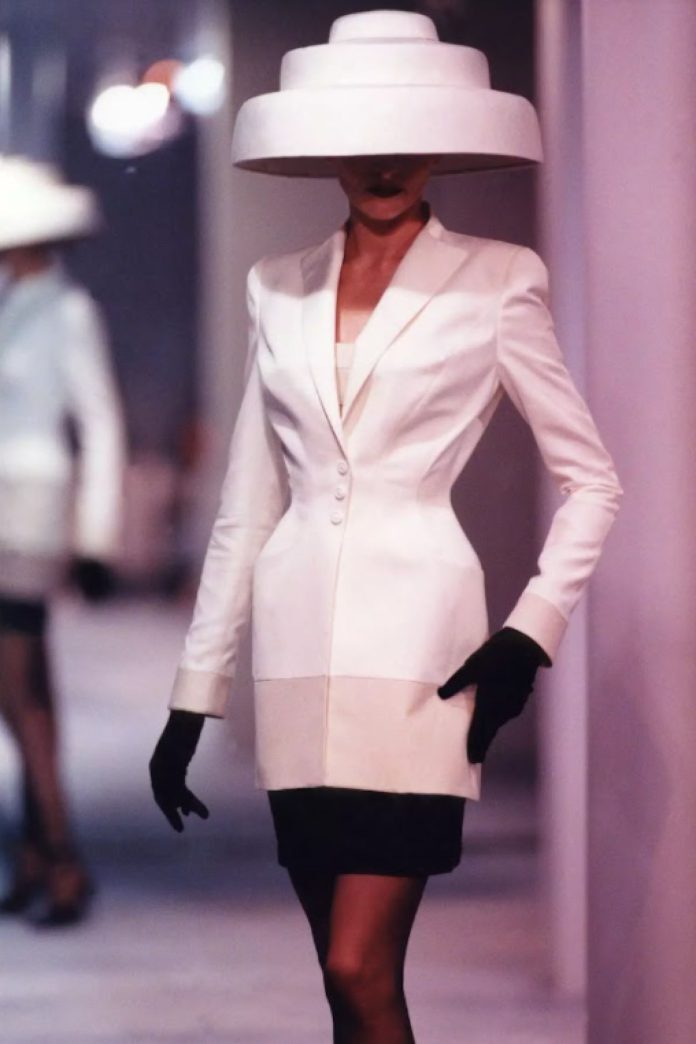Iconic French fashion designer Thierry Mugler breathed his last on 23rd January. Tributes for him poured in from around the world. Many who had worked with him took to social media to share their experiences of interacting with him, adding that his electrifying presence would be missed. His passing away has brought to a close an era characterised by clothing designs tinged with quirkiness.
Born in Strasbourg, France, Mugler had since childhood shown an inclination for fine arts. While he had always harboured a love for drawing, he initially devoted himself to learning classical dance. As a teen, he joined the prestigious Opéra national du Rhin to master the classical dance form of ballet. Simultaneously, he enrolled himself in an interior design training programme at the Strasbourg School of Decorative Arts, to kickstart his formal education.

AN ARTISTIC PAST
But, his association with ballet did not long last as Mugler was considered a bit on the scrawnier side to be cast as a ballet prince. And though he did receive an offer from Maurice Béjart to join the Brussels-based Ballet of the Twentieth-Century, he turned it down and instead went away to Paris to try his hand at designing clothes. During his time in Paris, Mugler came to be noticed for his unique take on costume designing. Just a few days after arriving in Paris, Mugler managed to successfully sell his designs to fashion houses, sealing his destiny as one of the most iconic fashion designers the world would ever know.
Mugler’s work had always been far ahead of its times. With his early exposure to ballet, “Mugler had come to view the human body as an instrument for artistic excellence”. And therefore felt that it should be clothed in a manner that celebrated its striking elegance. Mugler was popularly known for his emblematic architectural designs that incorporated the cut-out style and sharp shoulders (Interview Magazine)

A CONTROVERSIAL YET ADMIRED LIFE
In 1973, Mugler launched his first fashion label, Café de Paris, and five years later went on to open a boutique on Place des Victoires. Here, apart from presenting his own work, he also included works from fellow designers that produced exclusive clothing outside the world of haute couture. On numerous occasions, he faced criticism, especially from women’s rights groups, for creating clothes that they claimed objectified a woman’s body.
In his long career, Mugler donned many hats. Apart from being a fashion designer, he also tried his hand at perfume creation, show conception and photography. As a creator, he looked at his shows with a holistic view and tried to work on all the aspects to make his shows immersive. Explaining, he said: “‘For me, it was obvious. Why would anyone only want fashion? There are the costumes, but there’s also the environment, the lights, the moment. Now I’m a photographer, too, and I love music. Fashion was very easy for me, so I said, ‘I have the power to make big shows’. The music, the sets, the light, the attitudes—it all helped to tell my story. Something I say to young people is, ‘Be clear what you want to say. Make sure that people get it’.”
He launched several labels, in a career spanning nearly 40 years. And though many of them went on to be remarkable successes, a few of them failed to hold up for long. After a series of financial setbacks, Mugler sold off his namesake label, Thierry Mugler, later known as Mugler, and walked away from the world of fashion. Despite this, he continued to work in creative advisory roles to prominent celebrities like Beyonce. During his time he also actively worked on his perfume brand, developing popular collections of exotic fragrances.

During the last few years of his life, Mugler became involved with meditation and yoga, but more notably, he dedicated himself to bodybuilding, a long-held passion. “I think it’s necessary for people to be a complete realisation of themselves. I have always been fascinated by the human body, and I wanted to pay homage to what it can do,” he once famously quipped. A controversial, yet enigmatic figure Mugler, long after will still be remembered for his evocative work.




